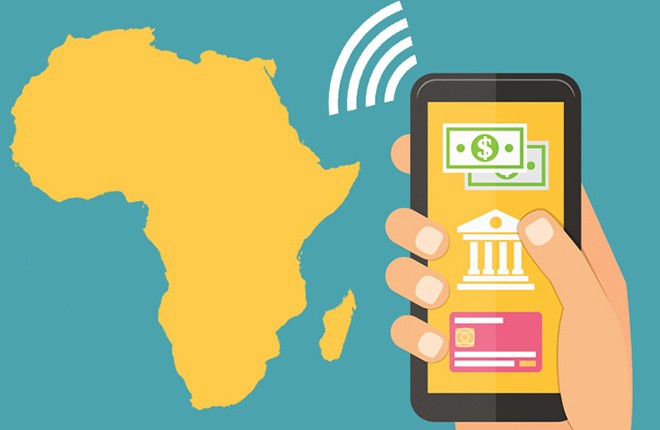Top Remittance Receiving African Countries 2022

2022 has seen a massive overhaul in the world of remittance; recovering from the pandemic and adjusting to the new normal have become key drivers in pushing the entire remittance industry to greater heights.
The outlook and overview of the remittance industry are not stagnating and are on a constant rise.
With the advent of globalization, people are settling down in different parts of the world, sometimes far away from home.
Hence, remittance is an essential and integral part of our lives, especially for international migrant workers. And today, the demand for a reliable platform for transferring money abroad is more than ever before.
As a result, there is a range of online platforms or apps available for remitting money.
However, safety and security are the first and foremost lookout when the matter is related to money.
World Bank Report
The World Bank recently came out with a solid report titled ‘Migration and Development Brief’ that gives a detailed representation of all the necessary predictions and trends.
The highly informative report highlights a series of predictions for the remittance industry.
The report predicts that the growth is expected to accelerate by 4.2%; the rise in figures is estimated to be $630 billion.
Initially, the surge was supposed to be much higher, but the unprecedented pandemic that took over the world in the last two years has served a severe blow to the cross-border remittance industry.
Global cross-border remittances have always been at the forefront of financial operations in low-income economies such as Africa.
For 2021, Africa saw a massive bump in international remittance numbers. Let’s look at the region-wise numbers for the year 2021.
Remittance In Flow In Africa
Moreover, the Middle East and North Africa Region accrued remittances totaling $62 billion during 2021 with growth registering 9.7%.
Egypt is by far the largest recipient of remittances among developing countries in the region (54% of the total), garnering $33 billion in 2021.
With stronger ties than those of the Maghreb to the Gulf Cooperation Council(GCC) and other Arab countries.
For the region’s developing economies, remittances have long constituted the largest source of external resource flows (WBG, 2021).
The aggregate remittance inflows to Sub-Saharan Africa declined by a sharp 14.1% during 2020, due to a $6.6 billion (28%) fall off in officially recorded flows to Nigeria, which accounts for 50 percent of remittances to the region (WBG, 2021).
North Africa saw a growth of 7.6% in 2021, with countries such as Morocco (40%) and Egypt (6.4%) leading the way.
Several factors played a considerable role in the surge, some of which include:-
– Economic growth and recovery in countries in the European Union (EU)
– Transit Migration to countries such as Egypt, Morocco, and Tunisia
Sending Money To And From North Africa
Sending money To North Africa for the year 2022 will settle at a steady 6% rise. With the world slowly rolling back to normal after the pandemic and the geopolitical issues persisting in today’s world.
Cross-Border money transfers involve many risks and stress if not executed correctly and without involving trustworthy operators. T
Thus it is natural for remitters to search for a trusted remittance platform that offers low transactional rates.
Sub-Saharan Africa saw a massive growth of 14.1% in 2021, with countries such as Nigeria (11.2%), Cabo Verde (23.3%), Gambia (31%), and Kenya (20.1%) paving the way towards a massive rise in remittance numbers.
The factors that dictate such a massive surge in the region are –
- Continuous adoption of online money transfer channels
- Rapid fall of remittance charges globally, but particularly in Sub-Saharan Africa
According to experts, sub-Saharan African countries will see a 7.1% bump in remittances for 2022.
To send money to and from these countries, a considerable cost is usually levied on the sender.
There is a widely accepted notion that this will be rectified this year.
Economic gravity and increasing digitization across the region will drive remittance prices down.
Here is a look at the top remittance-receiving African countries for the year 2021 –
- Ghana: $4.5 billion
- Kenya: $3.7 billion
- Senegal: $2.7 billion
- Zimbabwe: $2.0 billion
- Democratic Republic of Congo: $1.3 billion
- Uganda: $1.1 billion
- Mali: $1.1 billion
- South Africa: $900 million
- Togo: $700 million
- Nigeria: $19.2 billion
In 2020, when the pandemic hit, the general perception of the remittance industry was that it was destined for failure and would not withstand the onslaught of the pandemic.
Albeit, people in the digital remittance industry, thought differently. We have learned never to underestimate the resilience and ingenuity of our customers, most of whom are migrant workers.
We were right to have faith. Remittances declined by just 1.7% globally in 2020 and are forecast to grow by an encouraging 7.3% in 2021. Remittance flows to Sub- Saharan Africa grew by 6.2%.
The industry predictions for the year 2022 have been optimistic, to say the least. We can all agree that the future of the remittance industry is safe and viable.




